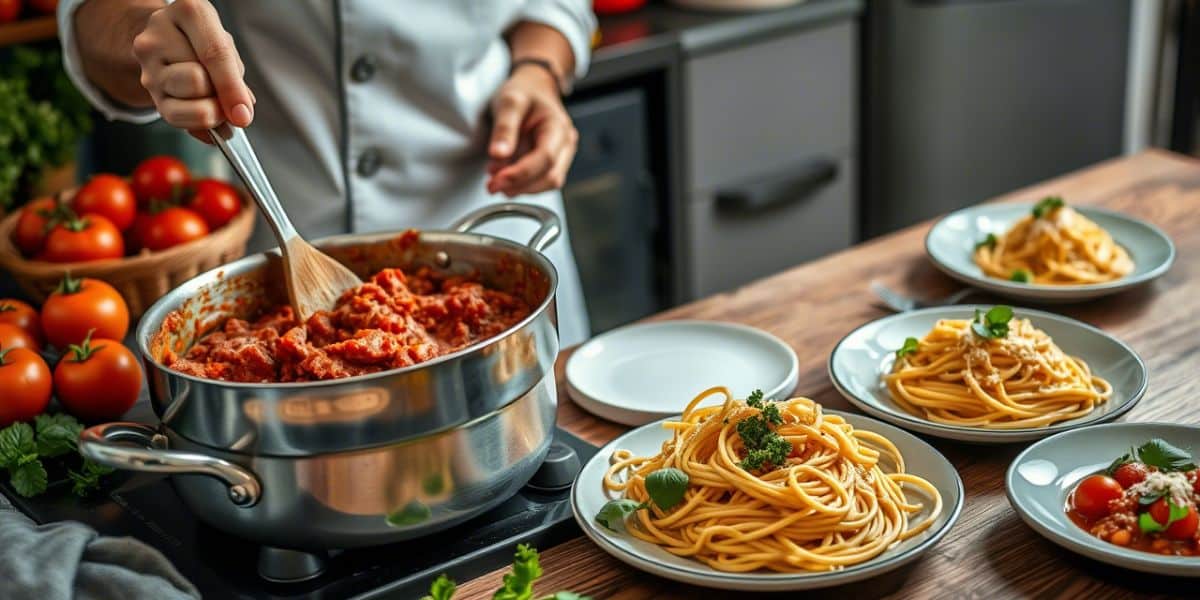Spaghetti Bolognese. The name alone sparks a comforting, hearty image, a dish that’s graced countless tables worldwide. But here’s the thing — most versions you encounter are far from the authentic experience. This article’s about diving deep into the real, classic Bolognese, uncovering its secrets, and giving professionals insights that elevate it beyond your run-of-the-mill pasta sauce.
The Origin and Evolution of Bolognese Sauce
Bolognese sauce, or Ragù alla Bolognese, hails from Bologna, Italy, a city known for culinary pride and traditions. Unlike the thick tomato-forward sauces many think of, the traditional Bolognese is a slow-simmered meat ragù with a delicate balance of flavors. It’s less about tomato and more about the meat, soffritto, and subtle aromatics.
Historically, it’s rooted in the 18th century but codified officially only in 1982 by the Italian Academy of Cuisine. The recipe mandates minced beef, pancetta, onion, carrot, celery, tomato paste, white wine, and milk. Milk? Yeah, it adds richness and cuts acidity, a detail often overlooked outside Italy.
This ragù was never originally paired with spaghetti. Tagliatelle, a flat ribbon pasta, was the traditional partner because it holds the chunky sauce better. Still, spaghetti Bolognese became popular globally, especially in Anglophone countries, evolving into its own culinary icon.
Understanding the Classic Bolognese Ingredients
Let’s talk ingredients, the soul of any dish. Quality here isn’t negotiable.
Meat Selection
Ground beef is the base, but traditionalists swear by a mix of pork and beef, sometimes even veal, to create complexity. The pork adds fat and subtle sweetness, balancing the leaner beef. Freshness and fat content are crucial — leaner meats lead to dry sauces, while fattier cuts provide silkiness.
Pancetta or guanciale is non-negotiable. This cured pork adds umami and depth, starting the sauce with a punchy, smoky base. No bacon sub — the curing and texture differ.
Vegetables: Soffritto Foundations
Carrots, celery, and onions form the soffritto, finely diced and slowly sautéed in butter or olive oil. The slow sweat extracts sweetness and sets the stage for all other flavors. Don’t rush this step; it’s the backbone of the flavor profile.
Liquid Components
White wine deglazes the pan, adding acidity and brightness. Avoid red wine — it’s richer and can overpower the subtlety.
Milk or cream is added late in the cooking process, mellowing the acidity from the tomatoes and tenderizing the meat. This step is a game-changer but often skipped by home cooks.
Tomatoes
Tomato paste is preferred over fresh or canned tomatoes, used sparingly. It lends umami and color without overwhelming the sauce. The goal is a harmonious background note, not a dominant flavor.
The Cooking Technique: Patience is King
The magic of Bolognese lies in slow cooking. Quick, high heat simply won’t cut it. Traditional recipes call for at least 2 to 4 hours of simmering. This slow process allows collagen in the meat to break down, enriching the sauce with gelatinous texture.
Start by rendering the pancetta until crisp. Then add soffritto and cook gently until translucent. Next comes the meat, which you brown carefully to develop Maillard reaction flavors — this caramelization is vital.
Deglaze with white wine, let it reduce, then stir in tomato paste and a splash of broth or water. Finally, add milk to soften the acidity. Simmer gently, stirring occasionally. Resist the urge to rush or stir too vigorously; you want a tender, rich texture, not mush.
Common Misconceptions and Errors
One common mistake is overloading the sauce with tomatoes. Classic Bolognese is not a tomato sauce, it’s a meat sauce with a hint of tomato.
Another is the spaghetti pairing. Spaghetti doesn’t capture the sauce well; it slips off. Tagliatelle, pappardelle, or even rigatoni are better matches. Professionals serving Bolognese should reconsider defaulting to spaghetti.
Many skip the milk addition, fearing dairy doesn’t belong in meat sauce. This step is traditional and critical for balancing flavors.
Emerging Trends and Variations
Modern chefs experiment by adding mushrooms or substituting meats (like lamb or game) for a twist. Some introduce soffritto variations with fennel or leeks to enhance aromatics.
The rise of plant-based eating has led to “vegan Bolognese” using lentils, mushrooms, or textured vegetable proteins. While these can be delicious, they diverge from classic Bolognese principles and serve a different audience.
Sous-vide methods have been adapted for the ragù, ensuring even cooking and meat tenderness without the risk of scorching. This technique is gaining popularity in high-end kitchens.
Expert Tips for Perfection
Use a heavy-bottomed pot or Dutch oven to distribute heat evenly.
Maintain a gentle simmer, never a rolling boil, to avoid toughening meat proteins.
Don’t skip the resting time after cooking. Letting the sauce sit for a few hours or overnight in the fridge allows flavors to meld profoundly.
Pair the dish with a robust Italian red, like a Chianti or Barolo, which complements the rich meat flavors.
Serving and Presentation Insights
Traditionally, Bolognese is ladled over freshly cooked tagliatelle, sprinkled with finely grated Parmigiano-Reggiano.
Avoid drowning the pasta. The sauce should coat the pasta lightly, creating a harmonious bite.
In professional kitchens, serving the ragù separately and allowing diners to mix encourages freshness and texture control.
Summary: The Classic Bolognese is More Than Meets the Eye
Bolognese is a slow-cooked symphony of meat, vegetables, and subtle liquids. Its mastery lies in restraint and technique. Professionals who respect the traditional ingredient ratios, cooking times, and pairing can transform a simple pasta dinner into an iconic dish steeped in history.
Avoid common errors like excessive tomato or quick-cooking, and embrace the slow simmer and milk addition for silky textures. Remember, spaghetti isn’t the classic partner; opt for broader pasta shapes.
With this knowledge, chefs can honor tradition while innovating subtly. Classic Spaghetti Bolognese isn’t just comfort food; it’s a benchmark of culinary finesse.

Emily Rose Johnson is a talented writer known for her captivating storytelling and evocative prose, creating unforgettable characters and compelling narratives in various genres.









